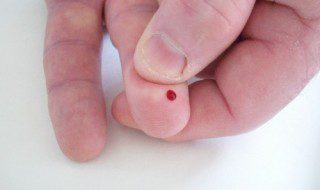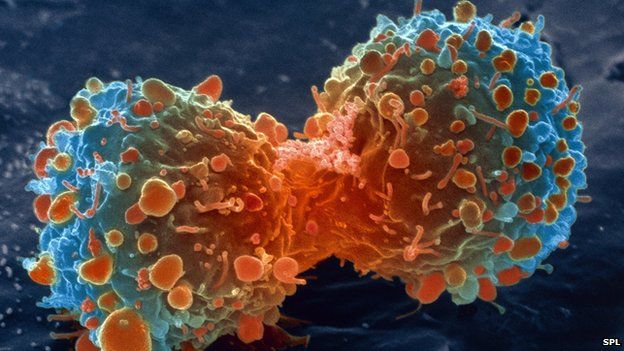Nature has shown an affinity to choose peculiar roads of evolution, intertwined with the generic concept of pollution. Owing to human activities, artificial elements jointly with the natural elements have declared a war against life. Civilizations experienced incurable diseases that are ultimately in the process of changing the course of time-dependent growth. In this mega crisis, science rekindles the hope of getting a potential remedy every day.
If we were to make a list of the most infamous diseases, Cancer would definitely snatch the first position. In short, uncontrolled proliferation of malignant tumors in different organs indicates some vigorous changes that need to go under a series of tests to be stamped as Cancer. It is rather a stage in which, cells no longer follow signals and divide autonomously without any limit. Named as metastasis, this is the reason why 90% of Cancer related deaths occur.
Naturally, controllable cell division happens at a regulated pace to perform various applications for which they are assigned. This process works in a chain like disciplined manner and is regulated by genetic information. Cancer takes place when a certain problem occurs in genes. Due to an error the control room i.e. gene produces faulty control signals and the cells spread throughout the body. These glitches which alter the functions of genes are an output product of any damage and sometimes it is hereditary. Faults in two types of genes are especially important for Cancer: Oncogenes, which drive the growth of cancer cells and tumor suppressor genes which prevent the cancer from developing.
Most interestingly, Cancer cells are adamant in nature. They do not bother to wait for any “start” signal to start their action. They produce their own chemical impulse and pass that information to surrounding cells dividing in innumerable segments. Some cells from among the normal ones somehow understand the situation and “self-destruct” itself but Cancer totally defeats their sacrificing act and tends to rely on new blood vessels to maintain the nutrients supply on the cancerous cells. Ultimately the malignant tumor migrates from one organ to the other organ, resulting in untimely death.

Though the exact process is more or less known to current medical science, the exact reason for Cancer is still unknown. Scientists indicate that Cancer is rather a fate which occurs due to reasons such as tobacco use, certain infections, and lack of physical activity, poor diet, obesity and environmental pollutants. All these coherently or individually effect genes or produce an additional fault in the gene to switch on the infinite cell division loop. Approximately (5-10) % Cancers are entirely hereditary and the rest are due to external factors.
The cumulative effect produces some abnormal signs in bodies and frequently they are dependent on the organs. Medical science has discovered that local symptoms might occur due to the mass of the tumor and its ulceration. For example, tumors in Lung Cancer can cause blockage of the bronchus resulting in cough or pneumonia, esophageal cancer can narrow the esophagus tube which in turns make it painful to swallow. Some ulcerations may cause bleeding which further comes out from the body as an output with excreta. Indirect signs also appear which includes unintentional weight loss, fever, and excessive tiredness. Ultimately, the direct and indirect signs need a validation from a specific biomedical detection to be labelled as Cancer.
Doctors believe that the time of detection directly corresponds to the chance of survival, when it comes to Cancer. Early detection might ensure getting cured whereas with time the condition degrades and gets out of hand. Though many of the contemporary methods are applied, Biopsy is the most famous technique adapted in almost all cases. Point to be noted is that all other tests can suggest the presence of cancer, however only biopsy issues the confirmation certificate. In short, it’s an invasive process which samples out a small section of cancer infected tissue and processed under various chemical or microscopic tests to be confirmed as Cancer. However, arguably this process further complicates the scenario inside the affected organ. Some experts believe that the invasive procedure actually turns on the cells and the division rate becomes even faster. Such a life-challenging process was in need of an upgrade and contemporary science and technology is spreading its roots deep inside to study the gene instead of body tissue.
The entire world is now concentrating on a particular alternative, rather a potential diagnosis technique which is non-invasive in nature and requires least time and effort. Named as “Liquid Biopsy”, the simple technology takes help from blood extracted using a hand-prick mechanism and presents the result. The process greatly depends on the cancerous cells. Dennis Lo, a Chinese scientist has spent nearly 20 years to find a novel method to counter this deadly disease which was dubbed as ‘’liquid biopsy’’. Lo and his hospital were involved in two huge research projects which concluded that DNA analysis can be a legitimate screening test. Other than helping in detection, liquid biopsy can also aid people in fighting the disease. Doctors can identify a suitable drug according to the particular DNA mutation that is allowing the Cancer to develop. Tests to identify the mutation may be standard biopsy tests that study the tissue of the affected area, but with the latest advances a simple non-invasive blood test may work perfectly.

Detection in later stages however decreases the chance of survival by a significant percentage. However, US based institutes such as Wake Forest Baptist medical Center has taken a similar approach to detect bio markers of diseases by analyzing the extracted nucleic acids from the blood drop. Here, 20 base long microRNAs were marked as the responsible candidates to store information about Cancer and many other diseases. Scientists finally sought help from nanotechnology to detect particular tiny microRNA sequence from the blood sample.
Cancer comes in various kinds depending on the target organ and according to Lo, Liquid Biopsy is the way forward when it comes to cancer diagnosis. He claims that he has already made great advancements in Nasopharyngeal Cancer and it might not take long to diversify the technique in other types. If Cancer detection could be miniaturized like the Diabetes “Home test”, undoubtedly it will provide a greater insight to Cancer’s devilish nature and boost the survival rate.
Thus we can conclude that it is time to open new avenues when it comes to the treatment of the life threatening Cancer and ‘Liquid Biopsy’ is certainly a step in the right direction.


